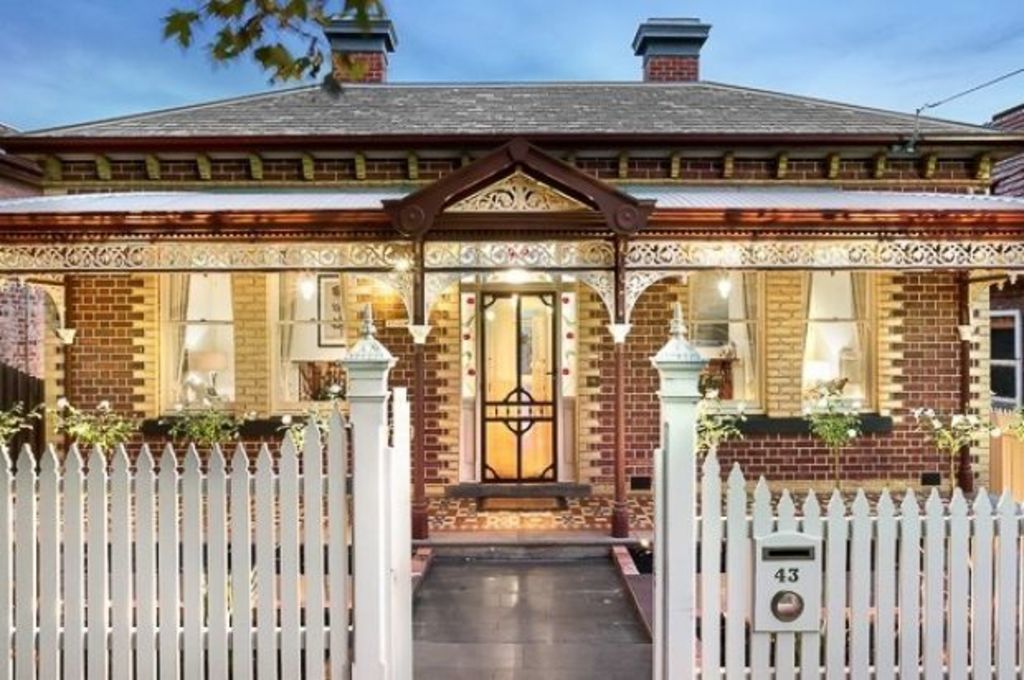
Buying a house in Melbourne: suburbs threatening to hit $1 million median price
A dozen Melbourne suburbs are threatening to smash through the million-dollar mark, locking a growing number of home buyers out of the market.
Suburbs with a house median between $950,000 and $1 million include Thornbury, Moonee Ponds, Parkdale, St Kilda and Burwood East, Domain Group data shows.
Strong price growth across the city continues to have a ripple effect, and in the inner north, buyers squeezed out of the once-affordable Northcote have looked to Thornbury. In turn, with Thornbury’s rise, buyers keen on the area are looking to Preston.
The recent toppling of Thornbury’s price record with the $1,945,000 sale of a renovated house at 13 Shaftesbury Parade exemplifies strengthening demand.
Hocking Stuart Northcote director Sam Rigopoulos said Thornbury was a tale of two pockets.
Properties a few of blocks on either side of High Street, heading along Thornbury village, were “red hot” and seen as an extension of the Rucker’s Hill precinct, he said.
Some homes in the popular Thornbury pocket also sit in the prized Northcote High School zone.
The agency recently inked an off-market deal of a completely unrenovated home in Ballantyne Street for close to $1.7 million.
“There are a couple of die-hard Thornbury buyers, but almost all of them are really coming out of Northcote frustration,” Mr Rigopoulos said.
But other pockets of Thornbury, a bit more removed from the lifestyle and amenities, had “a long way to go” to get to the same price territory.
Pocket-sized Parkville has a house median at $996,500, but has fallen out of the prestigious million-dollar club after recording a higher proportion of lower-priced sales.
Six months to March median prices were modelled by Domain Group chief economist Andrew Wilson.
In the south-east, Oakleigh’s house median climbed 18.3 per cent over the year to $950,000.
Ray White’s Gareth Apswoude said the suburb was drawing buyers priced out of Murrumbeena, and receiving side-traffic from Malvern East.
Demand was also driven by the gentrification of shops in Oakleigh, with trendy cafes and restaurants, he said.
Mr Apswoude said an entry-level house in Oakleigh – an original three-bedder – was about $950,000.
The record house price in Oakleigh stands at $2 million, for a renovated federation house at 17 Palmerston Grove sold last July.
About 24 kilometres north-east from the CBD, the median house price in Research has hit $972,625.
National Shelter’s Adrian Pisarski said the growing number of suburbs approaching a million-dollar median price was locking a growing number of home buyers out of the market.
“The only people who can really afford those prices already have a significant asset; so they may be moving house and selling to upgrade, have a significant amount of equity, or people who are investing to rent,” he said.
Mr Pisarski said successive government policies had rewarded speculation in the housing market rather than owner-occupation.
“Housing has become a commodity rather than something in which you enjoy life, or raise a family,” he said.
“It’s our tax policies and other things that largely support that by helping investors along the way, on the basis of an expectation of capital gain. It’s locking younger generations out of the housing market, it is stopping owner-occupiers from acquiring places to live in.”
The number of first home owner grants in Victoria fell to their lowest level in more than a decade last year, state government figures show.
iFrameResize({checkOrigin:false},’#pez_iframe’);
Some of the biggest drops have occurred in the eastern suburbs, including Glen Waverley and Mount Waverley, and inner suburbs such as St Kilda.
Dr Wilson said Melbourne’s median house price would likely grow by about 4 or 5 per cent this year, and there were no prospects for a significant fall.
The sharpest decline in Melbourne’s median house price in recent times was in 2011, when prices were down by about 4 per cent annually after nearly 30 per cent growth over 2009-10, he said.
